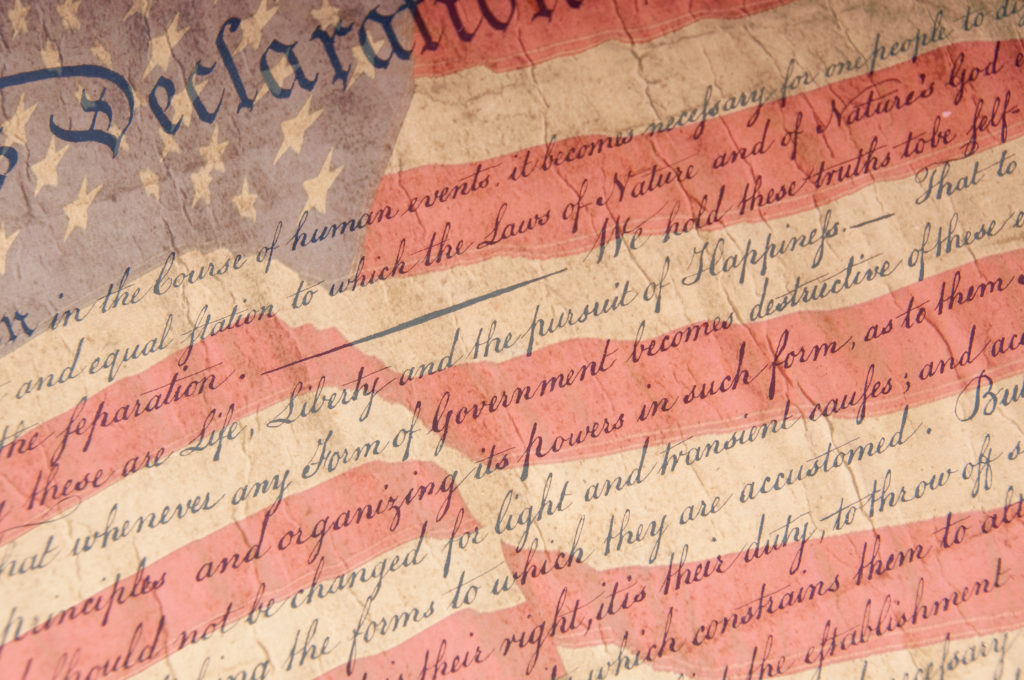Is Clarence Thomas the greatest originalist justice in the Court's history?
A Better Sort of Constitutional Learning: James McClellan’s Liberty, Order, and Justice
Attorney General Jeff Sessions not long ago characterized the office of sheriff as a “critical part of the Anglo-American heritage of law enforcement.” This plain statement of an incontrovertible fact should not have been controversial. Yet with clockwork predictability, social media activists began excoriating Sessions for his ethnocentrism.
Even those who should have known better—Bernice King (daughter of Martin Luther King, Jr.), the NAACP, college-educated personalities in the Twittersphere—piled on the criticism, accusing Sessions of racism and suggesting the term “Anglo-American” was a dog whistle for white nationalists and the alt-Right. It was another sign of how uninformed many in our society have become, and of how name-calling and crude labeling have replaced constructive dialogue and civil conversation in the political sphere.
Fortunately, there’s a good, levelheaded primer for understanding the basic framework of American government that teachers and other leaders should recommend and assign to our ignorant masses: James McClellan’s Liberty, Order, and Justice: An Introduction to the Constitutional Principles of American Government, which the Liberty Fund published in 2000.
McClellan, who passed away in 2005, was a proud Virginian who taught at several universities, including the University of Virginia, and was, among other things, the James Bryce Visiting Fellow in American Studies at the Institute of United States Studies (University of London) and president of the Center for Judicial Studies at Claremont McKenna College in California. He was also for a time a senior resident scholar at Liberty Fund.
Liberty, Order, and Justice is McClellan’s best known work. It maps the history and philosophy that shaped the U.S. Constitution and its amendments and is separated into seven parts, each appended with primary sources that are reproduced in full or in part: Magna Carta, the Petition of Right, the English Bill of Rights, the Mayflower Compact, the Declaration of Independence, the Virginia Bill of Rights, the Federalist Papers, the Virginia Plan, the New Jersey Plan, the Northwest Ordinance, and many others.
As a straightforward overview of the seminal concepts that characterize American government—separation of powers, republicanism, federalism, checks and balances, rule of law—this volume could serve, and probably has served, as the principal textbook for a high school or college course. The “Suggested Reading” lists at the end of each of its sections provide more than enough supplemental material to round out a semester of comprehensive study.
A work of such breadth and scope is impossible to summarize. McClellan begins with British history, in particular the emergence of Parliament, the evolution of the common law, and the development of legal doctrines and principles that responded to changing circumstances. He discusses the differences between the French and American Revolutions, and their respective effects upon the imaginations of Americans who were alive at the time. He devotes an entire section to the Philadelphia Convention, which he says, perhaps overstating, was “often more like a gathering of polite friends than an assemblage of angry political zealots.”
McClellan’s chief concern is federalism, a principle that appears throughout. He highlights disagreements between the Federalists and the Anti-Federalists, warning that “we should not presume that the Anti-Federalists were wrong.” He adds: “The inquiring student, having examined the debates thoroughly and objectively, may well conclude that the Anti-Federalists were right about certain matters.”
Lest his readers get lost in the historical and conceptual details, McClellan prefaces each section with the heading “Points to Remember,” followed by numbered outlines of central facts and themes. This feature enables easy memorization and study—another reason the book is suited for the classroom.
For the most part, McClellan recounts historical events dispassionately, and lays out influential concepts with no personal pique or ideological bent. Only occasionally is he tendentious, and then only subtly so. For instance, his judicial hermeneutics seek out authorial intent, thereby rejecting textualism and signing on to a now passé version of originalism. “The basic interpretive task,” he submits, “is to determine the intent of the Constitution, laws, and treatises, and to construe all instruments according to the sense of the terms and the intentions of the parties.”
This statement might have made Justice Antonin Scalia unhappy.
He’s also skeptical of natural law, stating:
It may well be that we are all governed by a higher, unwritten natural law, emanating from God; that certain rights are by nature indelibly impressed upon the hearts and minds of all mankind; and that the spirit of ’76 is incorporated into our fundamental law. The problem is that these concepts, whatever their merit and value, are not provided for in the Constitution, and there is no evidence that the Framers ever intended them to be.
This statement would have made Justice Scalia happy.
McClellan calls Sir William Blackstone’s Commentaries on the Laws of England a “great compendium of learning,” a term of endearment that applies equally to Liberty, Order, and Justice. The two have a similar aim: to synthesize disparate principles into a coherent treatise and to explain the origins and foundations of the current legal and political order. In a different age, when information wasn’t immediately available and students couldn’t google their way to quick answers, this book might well have become as important as the Commentaries.
Its cheerful conclusion, at any rate, seems naïve in our present moment: “What we have offered you in this book is the basic structure of America’s constitutional order. It is up to you to preserve and improve that structure; and you have a lifetime in which to work at it.” Were he alive today, McClellan might not be so optimistic.

